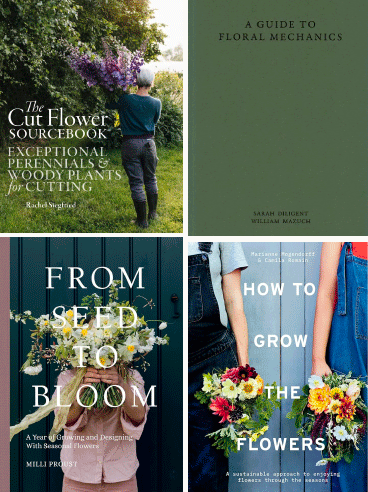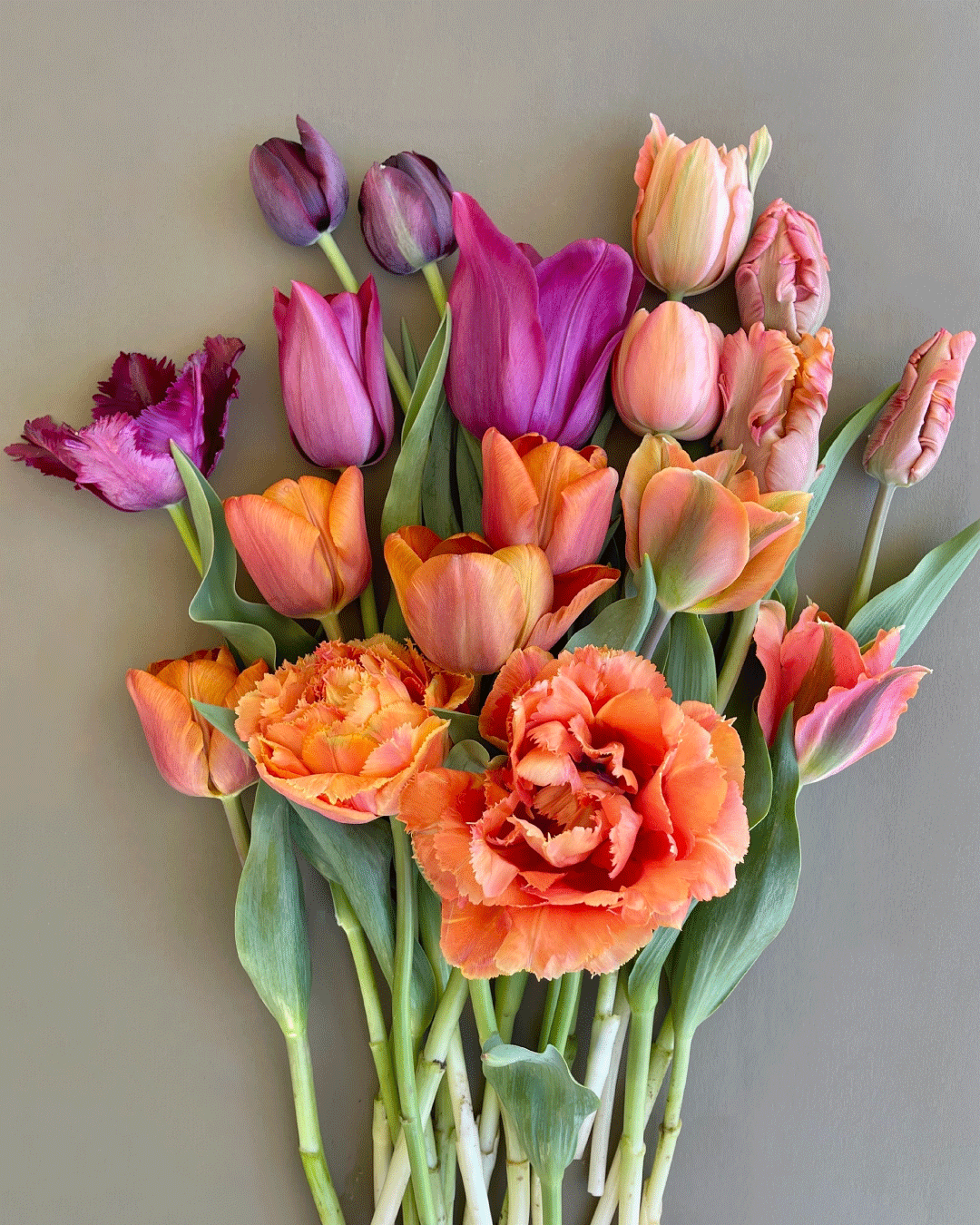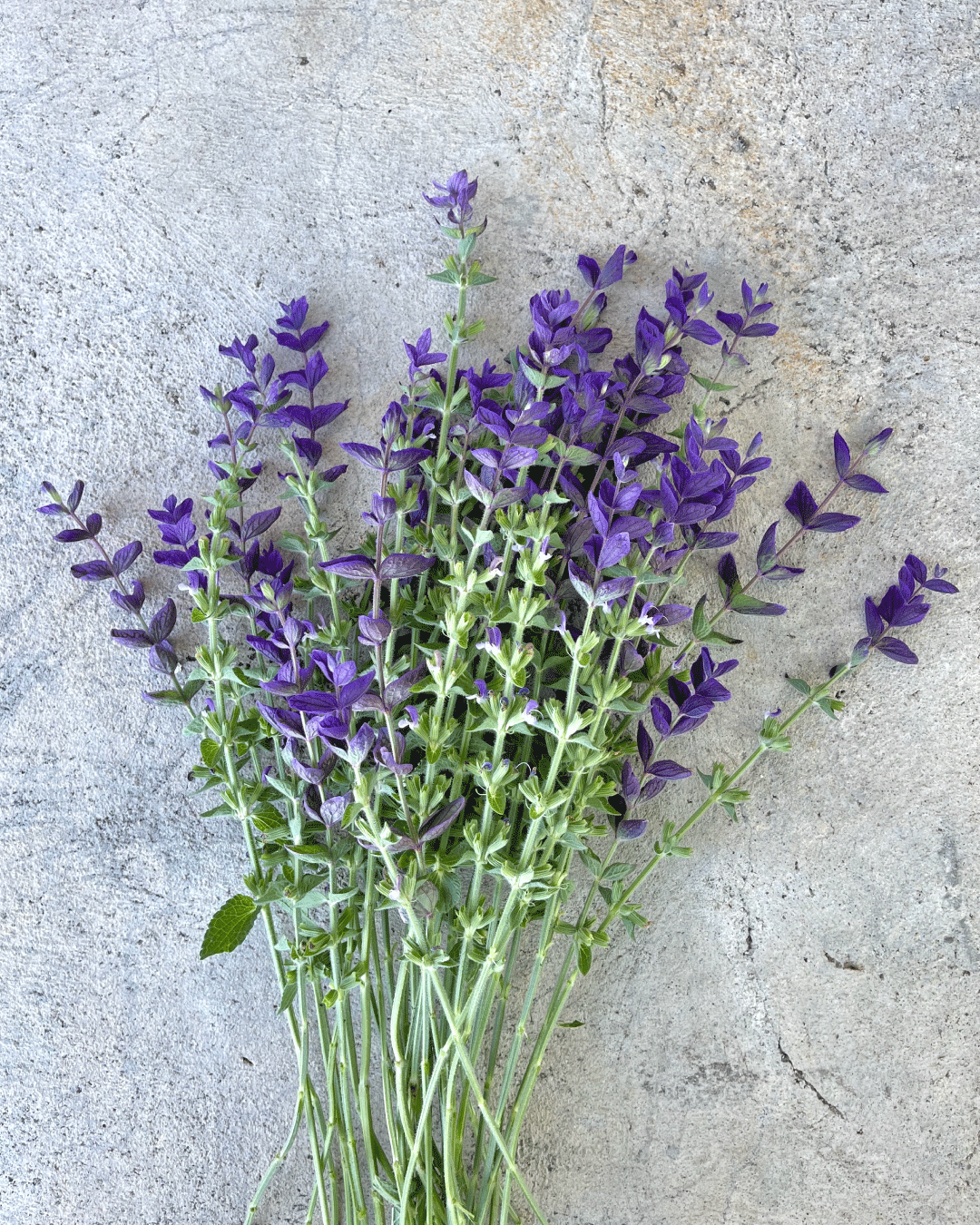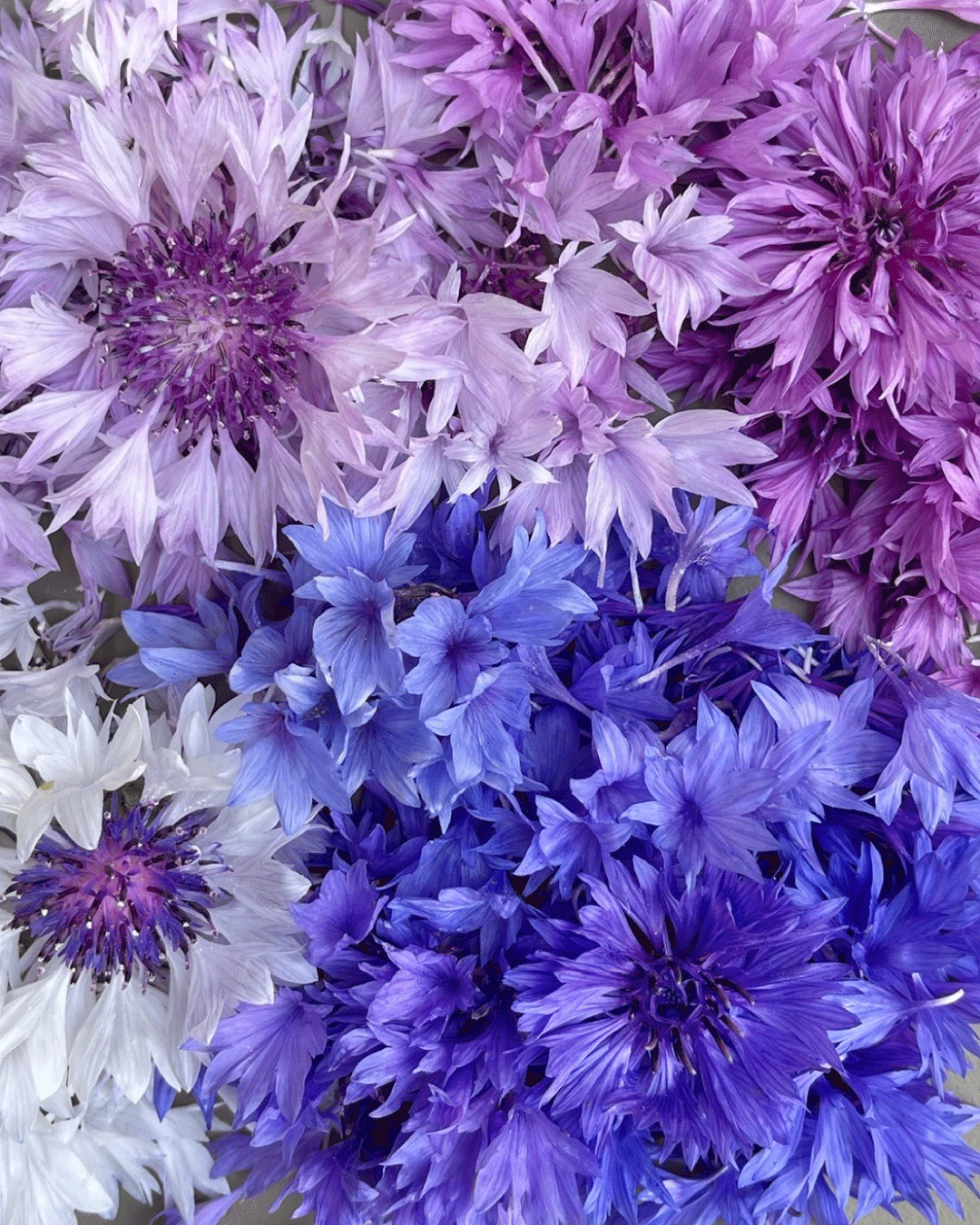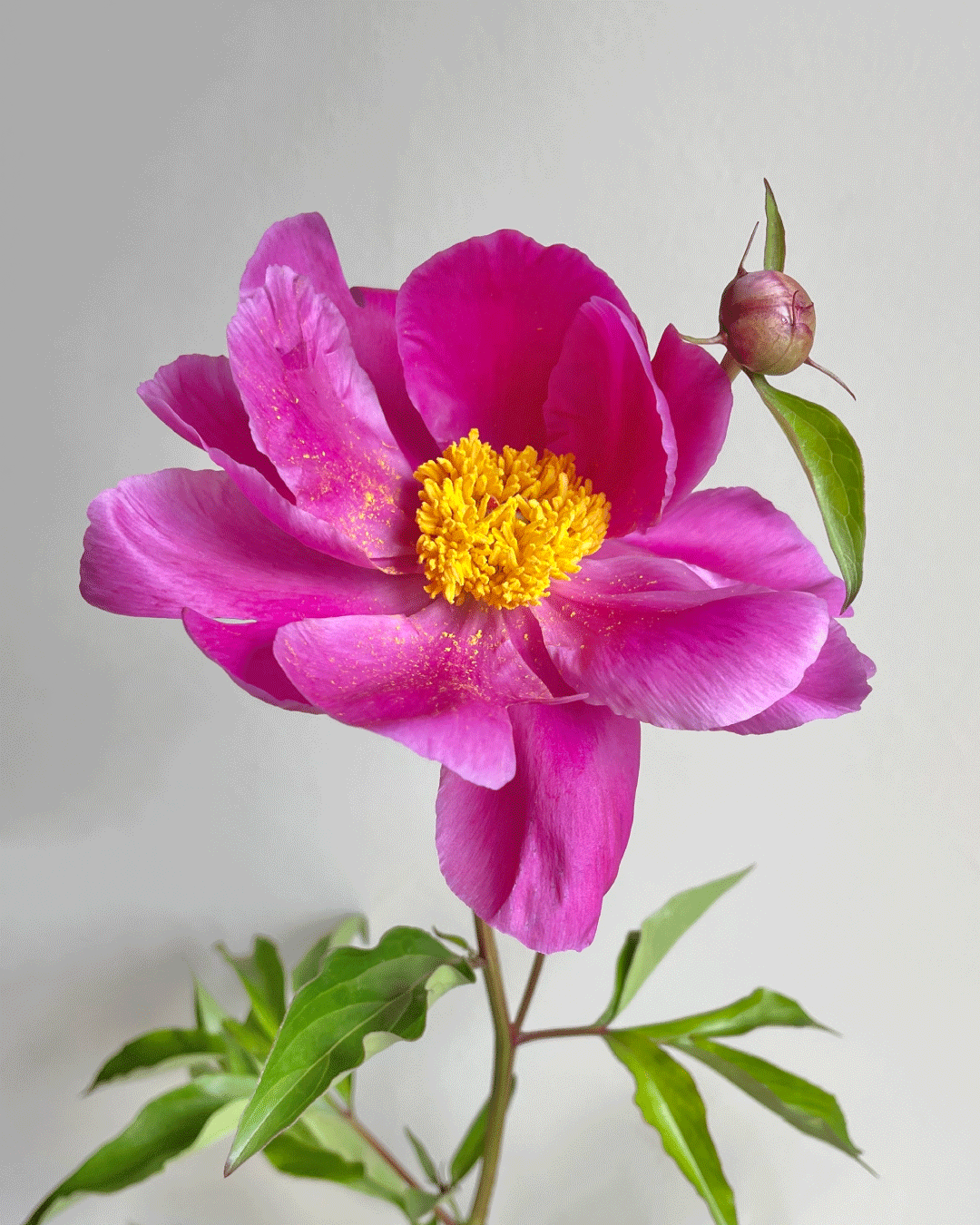Search Results
19 items found for ""
- Our Top Flower + Garden Books for 2023
Whether you're a seasoned gardener, a budding floral designer, or someone eager to infuse their living space with the beauty of blooms, this list is designed just for you. The Cut Flower Sourcebook Rachel Siegfried Here on Amazon Elevate your garden into a cut flower haven. This must-read guide focuses on perennial plants, offering insights on selection, planting, and care for an endless supply of beautiful blooms that will grace your home throughout the seasons. A Guide to Floral Mechanics Sarah Diligent and William Mazuch Here on their website A book for professional flower designers. Uncover sustainable practices in an industry where flower mechanics can be toxic, and enhance your craft with innovative techniques. From Seed to Bloom Milli Proust Here on Amazon+ How to Grow the Flowers Camila Romain and Marianne Mogendorff Here on Amazon Two inspiring books on collecting seeds, nurturing soil, choosing the best flowers, and creating beautiful arrangements for sale. Cut Flower Garden Erin Benzakein Here on Amazon Embrace the wisdom of a flower farming pioneer. Floret's book is more than a guide—it's a companion for every aspiring flower grower, providing solutions to challenges and celebrating the joys of a successful harvest. Planting the Natural Garden Piet Oudolf and Henk Gerritsen Here on Amazon An encyclopedia by renowned landscape designer Piet Oudolf, blending gardening and artistry for perennial plants. Gain a deeper understanding of plants' ecological roles while appreciating the beauty of a harmonious, sustainable landscape. Resilient Garden Tom Massey Here on Amazon Challenge conventional gardening practices and explore alternative, resilient approaches. This thoughtful exploration emphasizes sustainability, inviting you to reflect on the impact of your choices when creating green spaces. Modern Container Gardening Isabelle Palmer Here on Amazon Maximize your urban space with tips on selecting the best plants for balconies or terraces. This book breathes life and color into urban environments season after season. The Lean Farm Ben Hartman and Emma Gerigscott Here on Amazon A professional-oriented book addressing every aspect of starting a small agriculture business with a lean approach for efficiency. The Fine Art of Paper Flowers Tiffanie Turner Here on Amazon Luisa from Il Rigo suggested me this book when I started approaching paper flowers. Inspiring and comprehensive. I found it particularly helpful to learn basic techniques. Everlastings Bex Partridge Here on Amazon Learn smart techniques for arranging dried flowers, making wreaths, and growing the best flowers for everlasting arrangements to bring nature's charm into your home. Foraged Flora Louesa Roebuck, Sarah Lonsdale and Laurie Frankel Here on Amazon Immerse yourself in the art of foraging and floral design and get inspired by this book with exceptional, non-cliché photos. Explore unique and unconventional elements to incorporate into your floral arrangements. Last but not least Garden to Vase Online course here Aesme Studio has launched a new online course with tons of information on how to grow flowers for your home. It offers a comprehensive inventory of plants, beautiful videos on garden tasks, and downloadable material.
- 5 sustainable gift ideas
For that eco-conscious friend, design-lover mom or sister who dreams of a flowery field in the countryside, here are 5 eco-friendly and sustainable gift ideas straight from our garden. AN APPOINTMENT WITH GOOD VIBES A small box in a special Christmas package, containing a subscription of 4 or 6 bouquets of fresh flowers to discover the seasons of nature, you will feel like you have a little piece of our flower garden at home! The bouquets come directly from our field and are delivered within hours of harvesting. A FOREVER GARDEN Dried and/or paper flowers, in a bewitching design composition. The handmade Jesmonite base (a special cement composition) has a rough and RAW look, the flowers dance lightly. Have fun creating your garden and making it evolve with the seasons, by collecting or drying fresh bouquets of flowers. A MAGICAL CIRCLE Our garlands are created without wire or hot glue, which is why they are 100% sustainable. The weaving of the dried flowers with the jute rope gives a precious look, the garland is also pretty on the back and can be hung from a glass. A SELF-STANDING WREATH Say goodbye to nails in the wall, our Jesmonite base garlands can be placed on a table or used as a centrepiece. Pick a color that matches your decor for year-round use! Did you know that the circle is a symbol of good luck even for the birth of a newborn? A CLASSIC Timeless bouquets that last a long time and don't need care, even for the most ruthless plant killers! Dried flowers from eco-responsible companies in vibrant palettes in three different sizes that fit your vase perfectly, to always have a touch of color and good humor in your home.
- April - 5 seasonal flowers
Nature awakens, the bulbs that have been sleeping under the ground all winter wake up and show their wonderful colors. It is our favorite season. Tulip One of the best known and most popular flowers. In our garden we grow unusual varieties, double-flowered, with jagged petals or particular colors. We grow our own supply, from harvest to vase in just few hours, and you will notice that they last a very long time in your home. Only one flower per bulb, which is why spring flowers are also the most expensive. Narcissus | Daffodils Two palettes, yellow or coral, white outer petals, the narcissus is a simple flower reminiscent of grandma's gardens. Some varieties are very fragrant and in combination with tulips they create magnificent bouquets for the first brides of the season. Ranunculus We get lost in its thousand petals, available in many colors are a flower that immediately transmits joy to those who receive it. Hyacinth With an unmistakable scent, even a single stem is quite scenographic that it can create an installation. We love this burgundy color! Fritillaria Majestic, sinuous and fascinating, the fritillary persica is also known by the name of 'snake head' due to the movement of the stem when cut. We could spend days watching it moving. The stems have a height of more than a meter and are perfect for large compositions.
- July - 5 seasonal flowers
The garden blooms with bright colors! In the hottest month of the year we choose plants that need little water and that resist heat stroke. [from top-left] Sage It does not smell as the aromatic cousin but has a beautiful purple head, this variety gives a touch of color to all our summer bouquets. Panicum Flowers or fireworks? An easy-to-grow weed, panicum adds a wow effect to any composition Echinacea Resistant to heat and drought, echinacea will be one of the queens of our garden in the forthcoming seasons. Available in a super-extensive color palette, we can't choose a favorite. It can be dried very easily to enjoy it forever. Yarrow Another perennial flower that resists drought very well. The plant grows significantly from year to year and with its variety of colors it is the perfect companion of echinacea, in the garden as in bouquets. Suitable to dry too. Snapdragons Small cosy petals where pollinating insects hide, snapdragons bloom from June to September and despite their short pot life in the warmer months they are an excellent ally to give texture to compositions.
- June - 5 seasonal flowers
It is the time of the year when the sun heats the ground for several hours a day, the meadows are filled with wild flowers, in our garden the first annual and biennial flowers sown the previous autumn bloom. Yes, it takes patience and planning to grow flowers. [from top-left] Cornflower The wildflower par excellence. It blooms in abundance and self-sows easily, so you can enjoy it from year to year. Often new combinations of colors are created from the crossing pollination of different varieties. Our favorite palette ranges from mauve to blue to match other seasonal blooms. Forget me not Another romantic flower. Very small blue buttons that gradually bloom on the stem. Despite its small size, the scenic effect in a bouquet is guaranteed. Digitalis Biennial flower, meaning it blooms from the second year after sowing. As with snapdragons, its petals are a favorite hiding place for pollinators that are easy to find asleep lulled by the wind. Some varieties can reach one meter and twenty in height, they are the most suitable for large arrangements, while the smaller stems we keep them for bouquets and jars. The flower is always two-colored. Speronella Fresh or dry, a versatile flower that gives height to compositions. We love it in shades of white and lavender, and we are always fascinated by its long shelf life. Agrostemma Little known this summer flower has very long stems with white flowers. Unlike many similar flowers that have yellow pistils, these grays go perfectly with all palettes and satisfy even the most discerning brides. Their pot life is not long but for each stem you find 3/4 flowers that open in sequence.
- May - 5 seasonal flowers
In May, perennials start flowering in the field together with annuals that love cool temperatures such as sweet peas or orlaya. Easy to grow, they require little water and care, giving great satisfaction both in the garden and in bouquets and arrangements. [from up-left] Peony The queen of May par excellence, perhaps the most loved flower. It blooms only a few weeks a year and is therefore perceived as even rarer. There are many varieties available, together with the classic double-flowered ones suitable for large arrangements, we love for bouquets the smaller ones with only one turn of petals. Astrantia Easy to grow perennial plant, products of iridescent pink and gray cluster flowers, perfect as filler in combination with seasonal flowers for a super wild look. Sweet pea One of the first flowers from seed to bloom in spring. We sow it in the middle of winter and it loves cool temperatures. From its climbing vines sprout small perfumed flowers. Some varieties / colors have such a strong scent that it is impossible to keep them indoors. It blooms for a few weeks and stops producing flowers as soon as the heat arrives. It does not have a long vase life (2/3 days) but it has a charm that cannot be given up for a romantic bridal bouquet. Ornithogalum One of the spring bulbous plants that blooms later. Its flowers gradually open from the bottom up, making it one of the most enduring cut flowers of the period. We love this small-flowered variety, perfect for giving height and movement to the bouquet. Allium Grown in almost all the gardens, the varieties we grow start flowering in April (with the small Allium Cowanii) until July (with the romantic Allium 'Summer Beauty'), in the midst of many varieties from the two-colored Allium Sphaerocephalon, to the small Allium Roseum that we often find spontaneous also on the edges of the roads to the sea and to the largest Allium Nigrum (photo above).
- To be a flower, is profound responsibility*
For several years I bought flowers for my home, at the market, from street vendors or in flower shops, but only when I started this journey into the world of flower trade, a more thorough search also began on their seasonality and provenance. Have you ever tried to smell those roses that we buy even just for fun during a November evening? They don't smell, do they? Probably they come from Kenya and were collected almost a month before by workers without rights, after having been cultivated in an arid territory and using precious water for the local population, freezed in cells with temperatures around zero and maybe soaked in pesticides to preserve them during the long journey by ship that took them to Amsterdam from where after being sold at auction they travel by land to arrive in Milan. The one of roses is the most striking example, because is worldwide best-selling flower and contains a symbolic meaning for which we expect to find them available 365 days a year. In Italy, in nature, they only bloom in the hottest months, while in countries in the southern hemisphere they can be grown in heated and low-cost greenhouses, all year round. In 2008, Amy Stewart with the book Flower Confidential, raised the problem of intensive cultivation of flowers from developing countries, for which numerous chemicals are used, illegal in the countries where they are then exported. From here the Slow Flowers movement was born, to promote greater awareness of the sustainability of the flowers we put on the tables or in the living rooms, which should not be treated with less attention just because we do not eat them. Exactly as organic fruit exists, there are also organic flowers, cultivated according to parameters of sustainability and attention to the environment. A number of flower farms in South America have also been certified at European level for their sustainability, but once collected these flowers still make a long journey, passing through Miami and the Amsterdam auctions. Is it still possible to buy local and seasonal flowers? In Italy, alongside traditional flower growers who guarantee fresh and seasonal products, niche growers cultivate rare flowers or those that are not offered on the international market because they are fragile during transport. The demand is driven by a culture that is increasingly aware of the environmental impact of the products that enter our homes. In the Slow Flower Farm we find fascinating triple daffodils, majestic fritillaria, tulips that smell of honey and flowered branches, which bring us to the city that timeless charm of flowers gathered in the country gardens. Therefore, our RAWs are composed by flowers from local and organic growers and greens from the Slow Flowers Farms of northern Italy, cultivated according to the rhythm of nature, without using chemical fertilizers or pesticides and collected at the time of the order. *Emily Dickinson #fieldtovase #slowflowers #slowflowersitaly #organicflowers #localflowers #seasonalflowers #fiorikm0 #flowerfarmers #italianflowerfarmers #ssustainableflowers #flowerdelivery #seasonalflowersdelivery #flowershop #localflowershop
- 3 reasons to have fresh flowers in your life
The flowers, inside their delicate petals, hide the secret to give us a better life. The flowers not only spread an extraordinary beauty, but they can also have a fundamental impact on our health, reducing stress and helping us find peace of mind. Numerous studies have shown the beneficial effect flowers have on those who receive them as gifts and who regularly purchase fresh flowers for their homes. These people are not only less agitated, anxious and depressed, but they feel more satisfied in everyday life. But why do the flowers put us in a good mood? 1. Flowers increase productivity Researchers have discovered that in offices fresh flowers improve cognitive performance and increase creativity, our brain is stimulated by the colors and scents of flowers and works faster, improving problem resolution and significantly lowering stress levels. 2. The colors of the flowers evoke emotions Flowers can be used in combination with color therapy. For example: blue flowers encourage creativity, free thinking and calmness; yellow flowers evoke the sun and happiness; red flowers remind us of a great passion; green is related to safety, which could explain why having many plants around creates a comfortable environment. Each of us has his own personal relationships with colors that can make think of a happy memory and influence reactions. Choosing the color of flowers is a very important decision! Of course, it is also a great opportunity to create an emotion or a particular feeling in anyone who will receive them. 3. Flowers infuse serenity Growing a plant or taking care of a bouquet of flowers gives us a sense of responsibility and makes us feel satisfied. Flowers and plants have the power to make people happy, they can make us smile on a special occasion, cheer us up when we are sad or make the room more beautiful. When life seems to be in a state of constant frenzy, taking care of flowers can provide us with a well-deserved moment of serenity. #flowertherapy #freshflowers #flowersbenefits #flowersmood #flowersoffice #flowershome #relaxingflowers #flowersemotions #flowersvibes #naturegoodvibes #naturelovers #naturehappiness #flowerhappiness #positivevibes #beauty #localflowers #seasonalflowers #homedecoration
- How to create a flower crown
Wearing a crown of fresh flowers immediately brings us a breath of joy and happiness. It is not necessary to have a special occasion to show it off, if made with small and discreet flowers it can be a wonderful headband to match our outfit. In the spring RAW Boxes you will always find a few stems that can be used to create a magnificent crown! 1. Find the ingredients Let's start with the ingredients needed to create our crown: - two or three varieties of fresh flowers, a couple of stems are enough for each one, I like to put also some green foliage to give it the semblance of a bouquet but you can choose to do it only with flowers; - metal wire covered in paper ten centimeters longer than the circumference of the head; - florist's ribbon; - iron wire; - scissors with a sharp blade; - satin ribbon to close the crown. All the material can be found in well-stocked gardening stores. 2. Create flowers posies Create small bunches of four or five flowers and tie the composition with the florist's ribbon. I chose to have different design of bunches, so I took the three types of flowers and greens I selected and I mixed them together in a non-homogeneous way. In this way my crown will have movement and will not be symmetrical. If you prefer symmetry instead, create same-style posies! For a circle I created eight posies, for a full lenght crown double them. 3. Create and compose I take the wire that I previously measured and start applying the posies. I start from about 1/4 of the wire to create a half crown. I place the first bundle and with the help of the wire I hold it tightly to the wire. Continue with the same procedure for each bundle, placing them all in the same direction and adding wire when finished. There is no rule so give free rein to your creativity in placing bouquets! 4. Et Voilà Create two eyelets at the ends of the metal wire and pass the tape you will need to adjust the crown on your head. Et Voilà, the crown is created! The crown is made of fresh flowers so it will have a short life. To conserve it for a couple of days close it in a plastic bag and place it in the refrigerator. #flowercrown #diyflowercrown #freshflowers #flowerdelivery #flowerdeliverymilan #flowershop #flowerworkshops
- 3 curiosities about dahlias
Dahlias for me are a flower of beginnings. They bloom at the end of the summer, just in time to give us the right charge to start a new working year with beauty and joy. Although it is a flower that does not have a long vase life, we cannot avoid featuring it into our bouquets that begin to wink at autumn and its colors. 1. From Mexico Dahlias is a flower that came from Mexico, where it has been used since the times of the Aztecs both to decorate royal palaces and sacred places as well as used as food and medicine. Around the 18th century the bulbs were imported to Europe by the director of the Royal Botanical Garden of Madrid. It is said that these had not arrived for decorative purposes but with the aim of finding a valid replacement for potatoes. From that moment its beauty has spread around the world and more than 20,000 varieties have been created. 2. Thousands of colors and shapes to bring joy to every occasion Dahlias bloom from June to October and it is widely used in wedding arrangements, which have helped to increase its popularity in recent years. Very small or very large and available in infinite shades of color, it is a versatile flower in any bouquet, which is why it is much loved by flower farmers! 3. Not just love In the language of flowers, dahlia is a symbol of great admiration and esteem. It can also be gifted to express gratitude and affection. Its elegant shape conveys joy, optimism and freedom. #freshflowers #flowersbouquet #dahlia #dahliameaning #seasonalflowersmilan #flowerdelivery #flowerdeliverymilan #flowersmeaning #seasonalflowers #localflowers #italiaflowerfarmers #olgasflowerfarm #floretflowers #organicflowers #sustainableflowers
- 3 curiosities about zinnias
Most of the cut flowers with the arrival of summer's heat begin to suffer and their pot life is shortened. The secret lies in choosing for our bunches only seasonal flowers, already used to the scorching sun on the ground, they have good resistance even in water. One of the first varieties that give us the first warm rays of June is the zinnia. A flower of a thousand colors and shapes, brings joy and good vibes to our bouquets. 1. From the vibrant Mexico Zinnia is native to Mexico and Central America. His name is a tribute to the German physician and botanist Johann Gottfried Zinn who studies and imports the first specimens in Europe in the second half of the eighteenth century. 2. Don't get scared for heat Zinnia is an easy plant to grow. It is, in fact, a very strong plant that does not require specific care and has no special needs. This plant loves the heat, the sun and bears well even the torrid Mediterranean summer, which is why its cut flowers are also considered very resistant even in periods of high temperatures. 3. Symbolizes simplicity, tenacity and good humor Despite the exuberant beauty of its flowers it is an undemanding plant, which is why in the language of flowers it has the meanings of simplicity and tenacity. The zinnia flower’s message is that setbacks are only temporary, the heat of the moment will pass, and you will be able to move graciously through any obstacles to get to your goal. Zinnia is a source of good humor and joy. Useful for people who are agitated, hypersensitive or in need of laughing, this brightly colored flower with a simple shape puts people in touch with their inner child: lightness, happiness, the ability to always laugh, even of themselves. #seasonalflowers #localflowers #italiaflowerfarmers #organicflowers #flowerssustenability #freshflowers #flowerposy #bouquet #zinnia #zinnias #zinniasmeaning #flowersinmilan #flowerdelivery #loveflowers #flowersmeaning #flowerssymbol
- 3 curiosities about carnations
The carnation is a controversial flower but it is regaining its place in the most refined bouquets, giving a vintage touch to the composition. Personally it is a flower that I love very much, in its shades of pink it reminds me of the elegance of peonies and in red sumptuous velvets. Carnation is a flower that has a long vase life and that I often leave single stems in small pots around the house. 1.Origine The carnation originates from the Mediterranean coast and evidence of this can already be found in ancient Rome, where this beautiful flower was used for medicinal purposes. It seems that it defeated poisons and was a remedy against the plague. Moreover, its flowers with an intense aroma were put into the wine to flavor it and were used to create eau de toilette. The name "Dianthus" was given by the Greek botanist Theophrastus, and derives from the Greek words dìos, which means divine, and ànthos, which means flower, therefore, dianthus literally means divine flower. 2. Between myth and history Being present in Europe for thousands of years, carnation is one of the most rich in history and legends. In mythology, for example, it is the sacred flower to the goddess of hunting, Diana. According to legend, it is said that a young shepherd fell madly in love with Diana, who abandoned him after giving him false hopes of love. The young man died from despair a short time later and, from the tears he had shed for his love, white carnations were born. According to a Christian legend, it would have appeared for the first time on Earth from the tears shed by the Virgin Mary for the suffering of her son Jesus who carried the Cross to Calvary before dying, for this reason it is represented as a symbol of essence of naive, sincere maternal love and pure. In the Nordic tradition, the bride has to wear a carnation on her wedding day, which the groom will later have to find in his clothes. In this sense, the carnation symbolizes a promise of love and in many Flemish when in the hands of the person depicted a red carnation is a symbol of a promise of marriage. However, not only mythological legends are linked to the carnation, but also in history there are many stories linked to this extraordinary flower. It is said that in 1270 the death of many soldiers of Louis IX, King of France, due to a plague epidemic during the Tunisian crusade, was arrested thanks to a carnation distillate. Still in the historical context, in reference to the great characters, it is said that when Marie Antoinette, during the French Revolution, was imprisoned, she continued to receive messages that were carefully delivered rolled up in clusters of carnations. 3. Meaning In the language of flowers and plants the carnation generically symbolizes virtue, passion and romanticism, but each color has a specific meaning: the white carnation represents pure love, fidelity and good luck; the pink carnation symbolizes affection and maternal tenderness; the red carnation symbolizes passionate and profound love; mottled carnations represent kindness; the green carnation that appeared in the novel by Oscar Wilde, "The green carnation" in which it was described, the love between Wilde and Lord Alfred Douglas, is a symbol of homosexual love. #freshflowers #cutflowers #localflowers #seasonalflowers #organicflowers #bouquet #carnationsbouquet #carnationposy #carnationsmeaning #freshflowersmilan #flowerdelivery #flowerdeliverymilan #carnationsorigin #flowerslove #flowerssymbol
